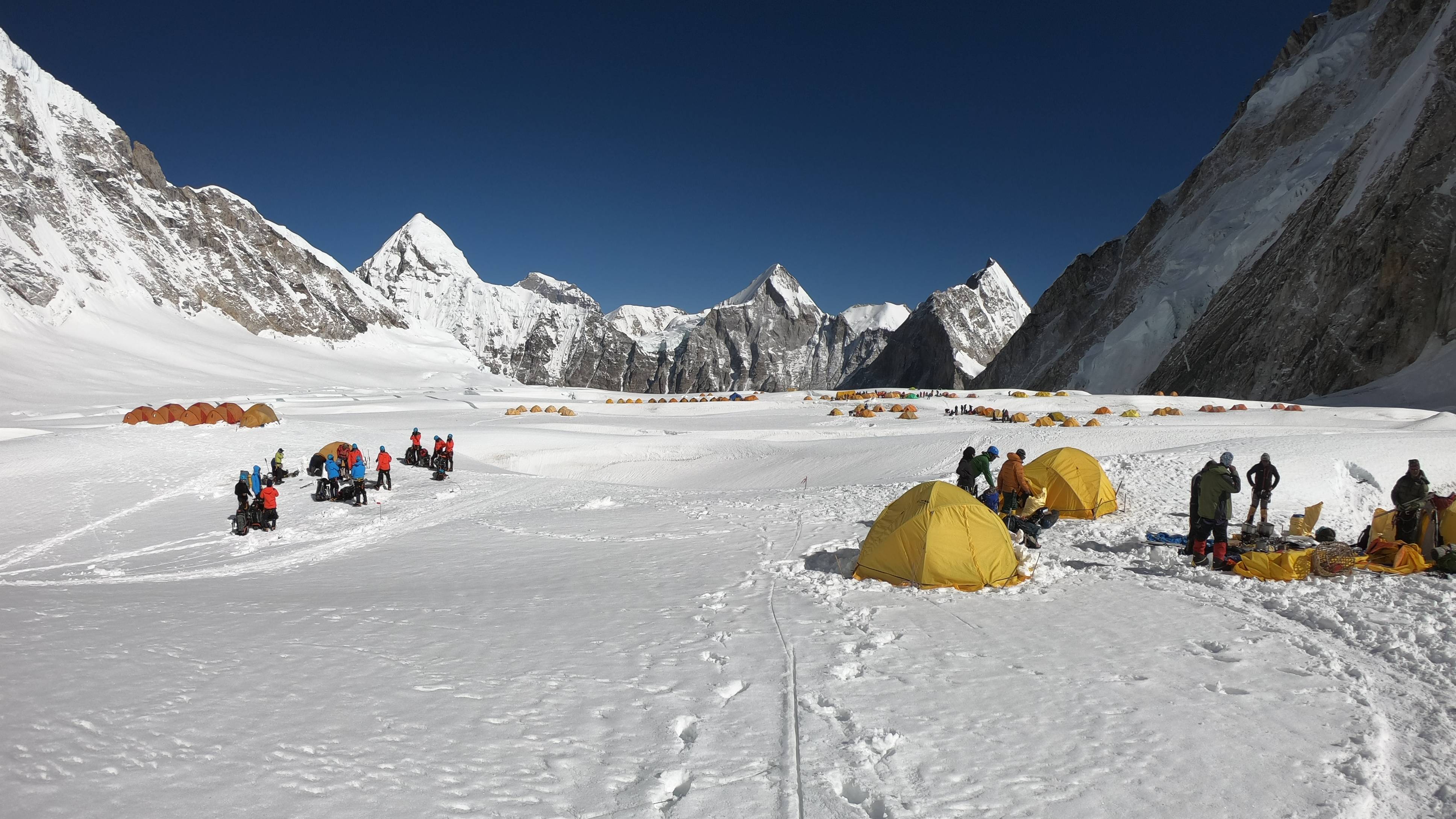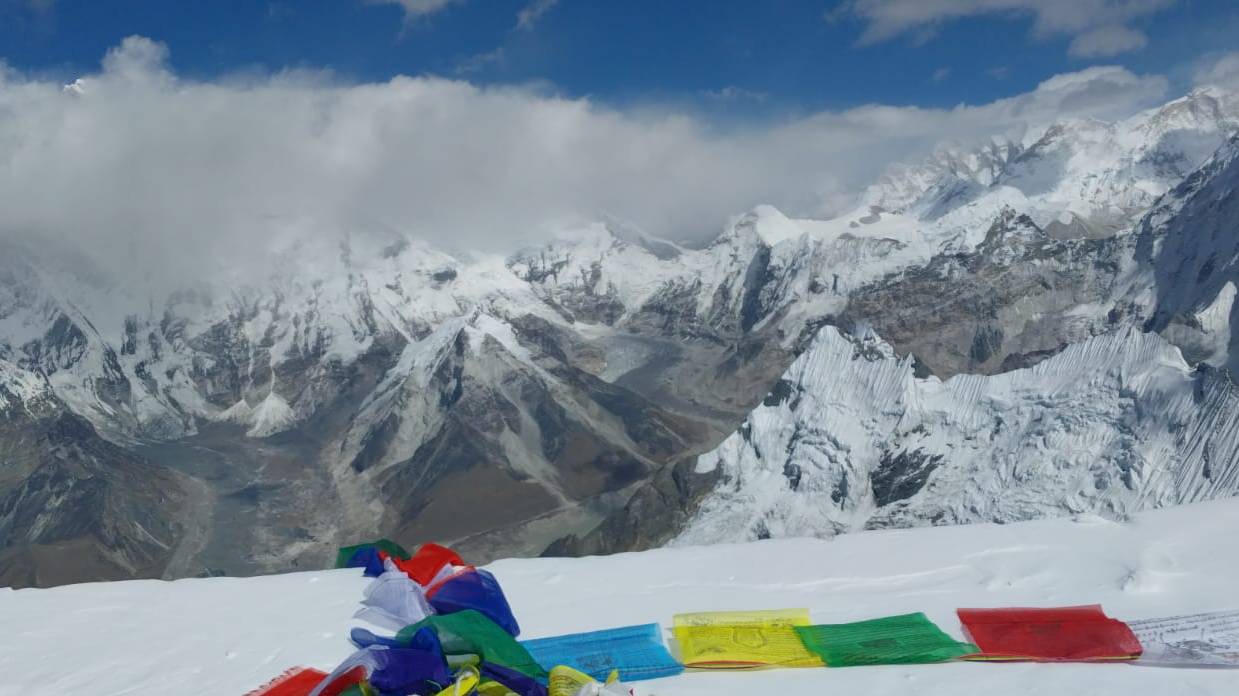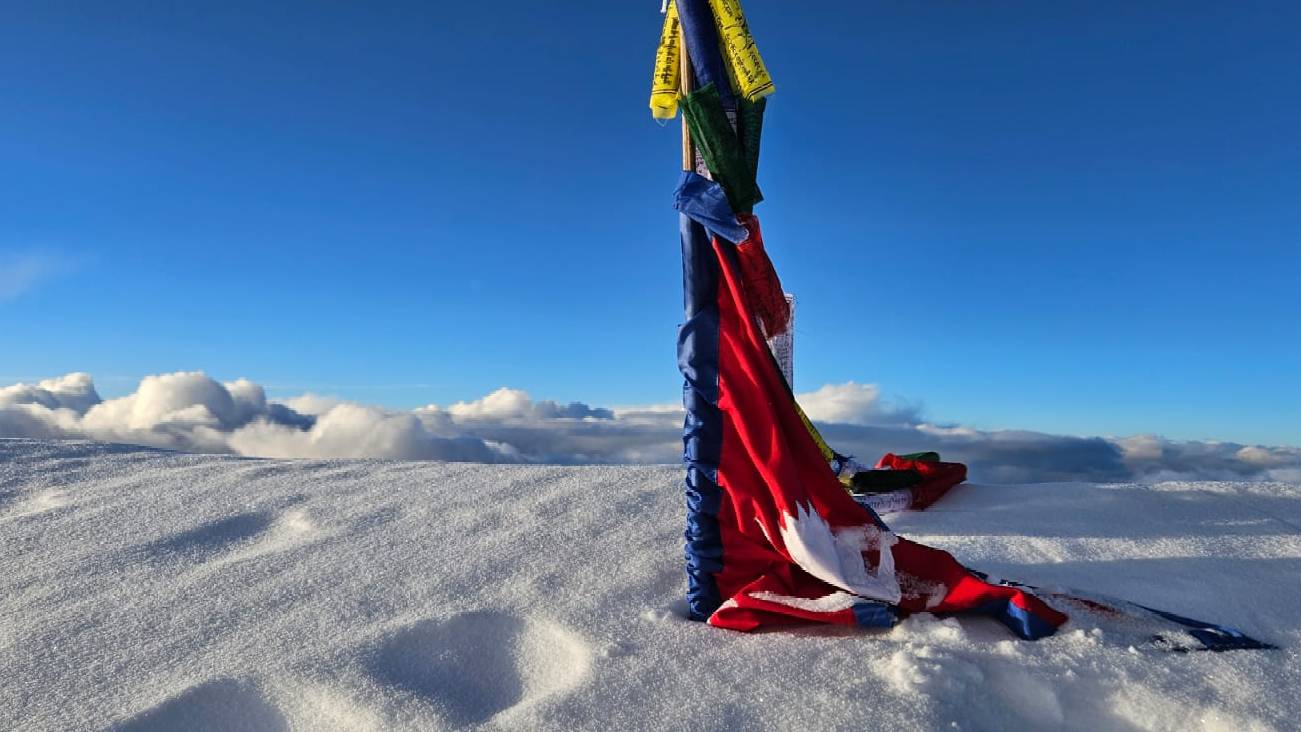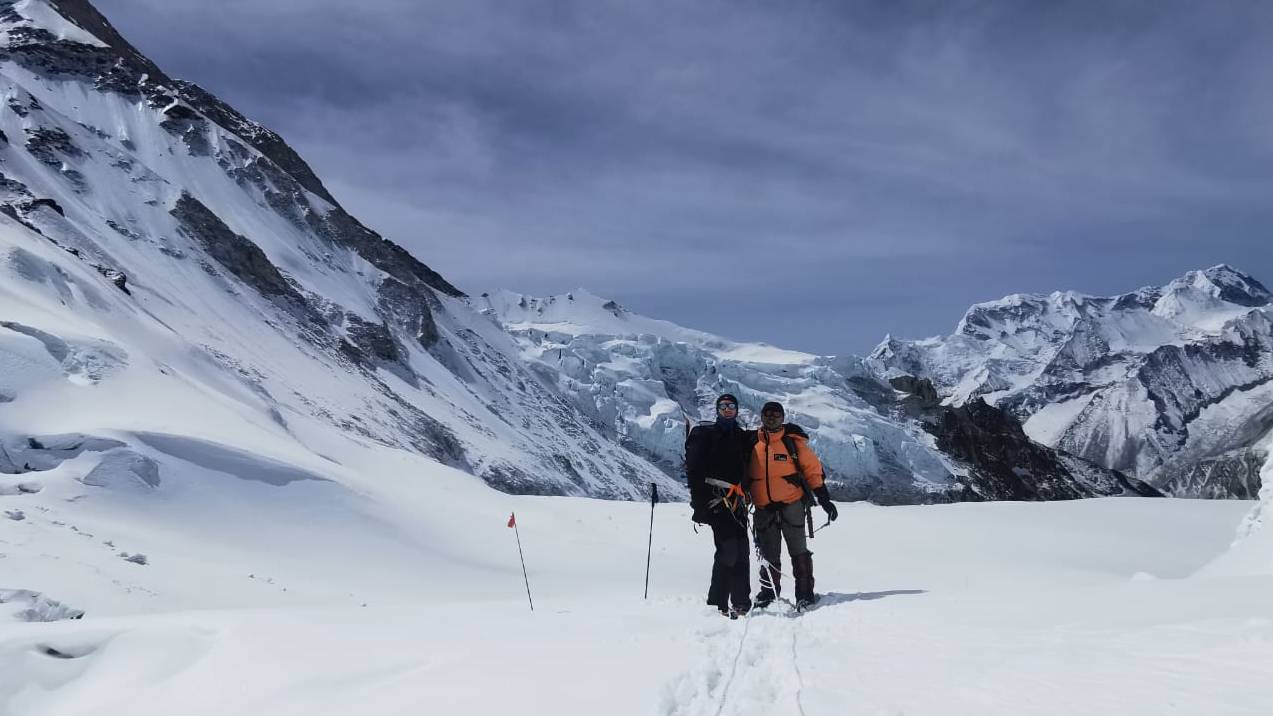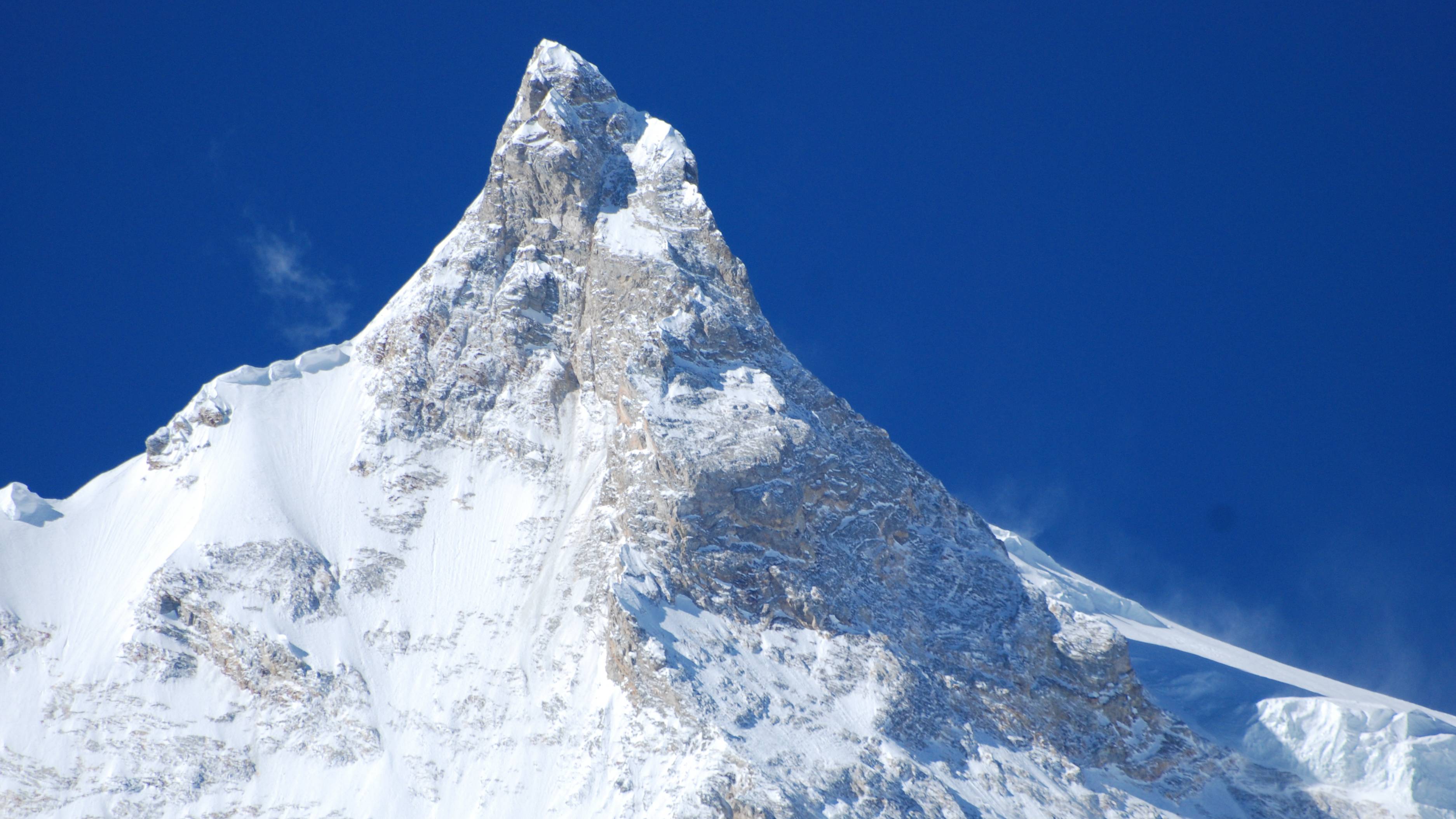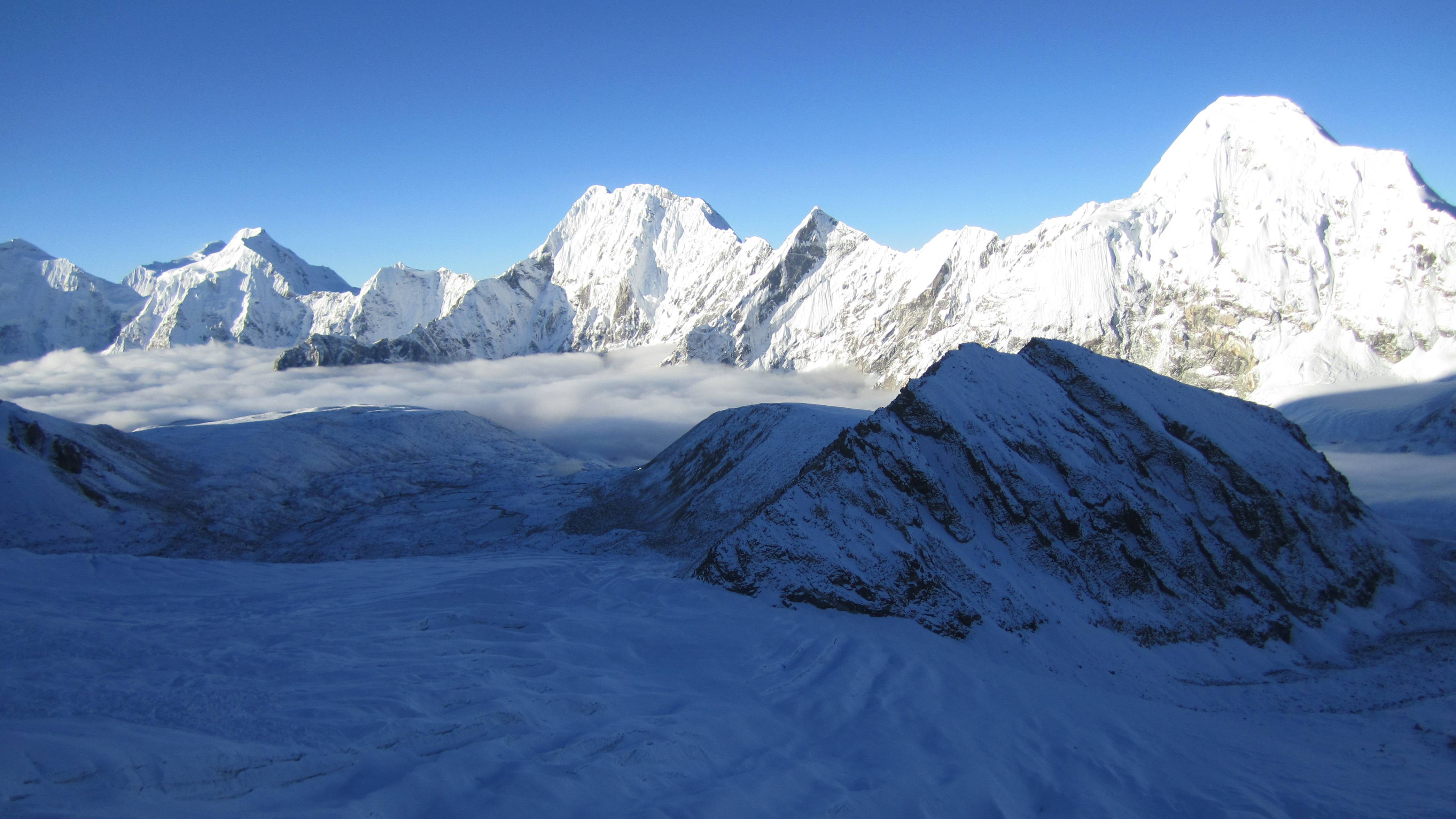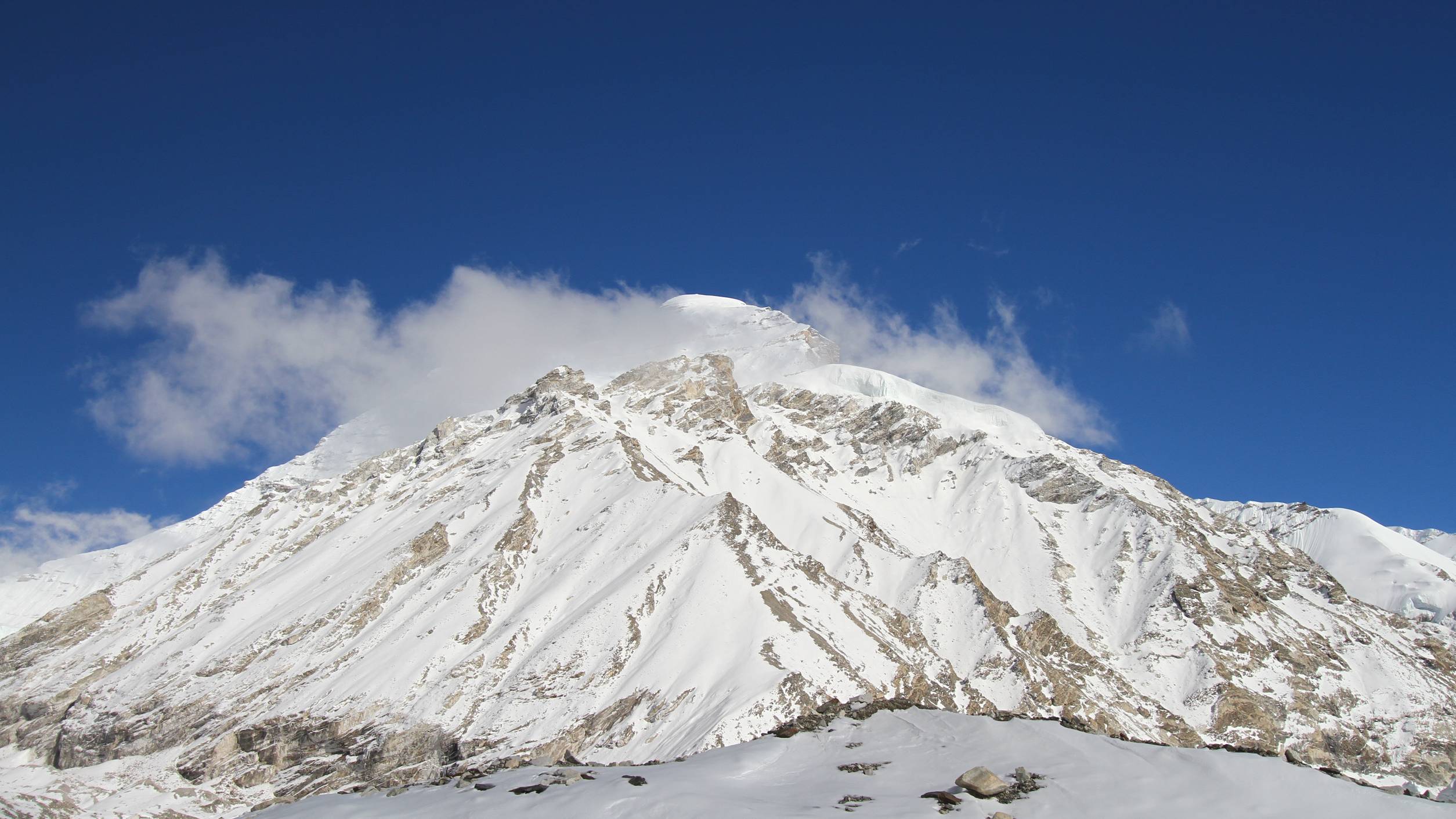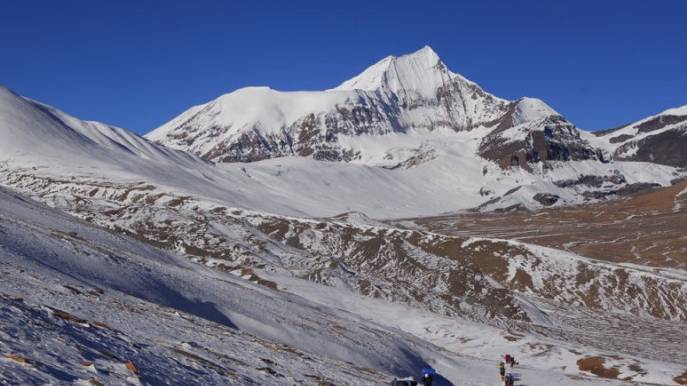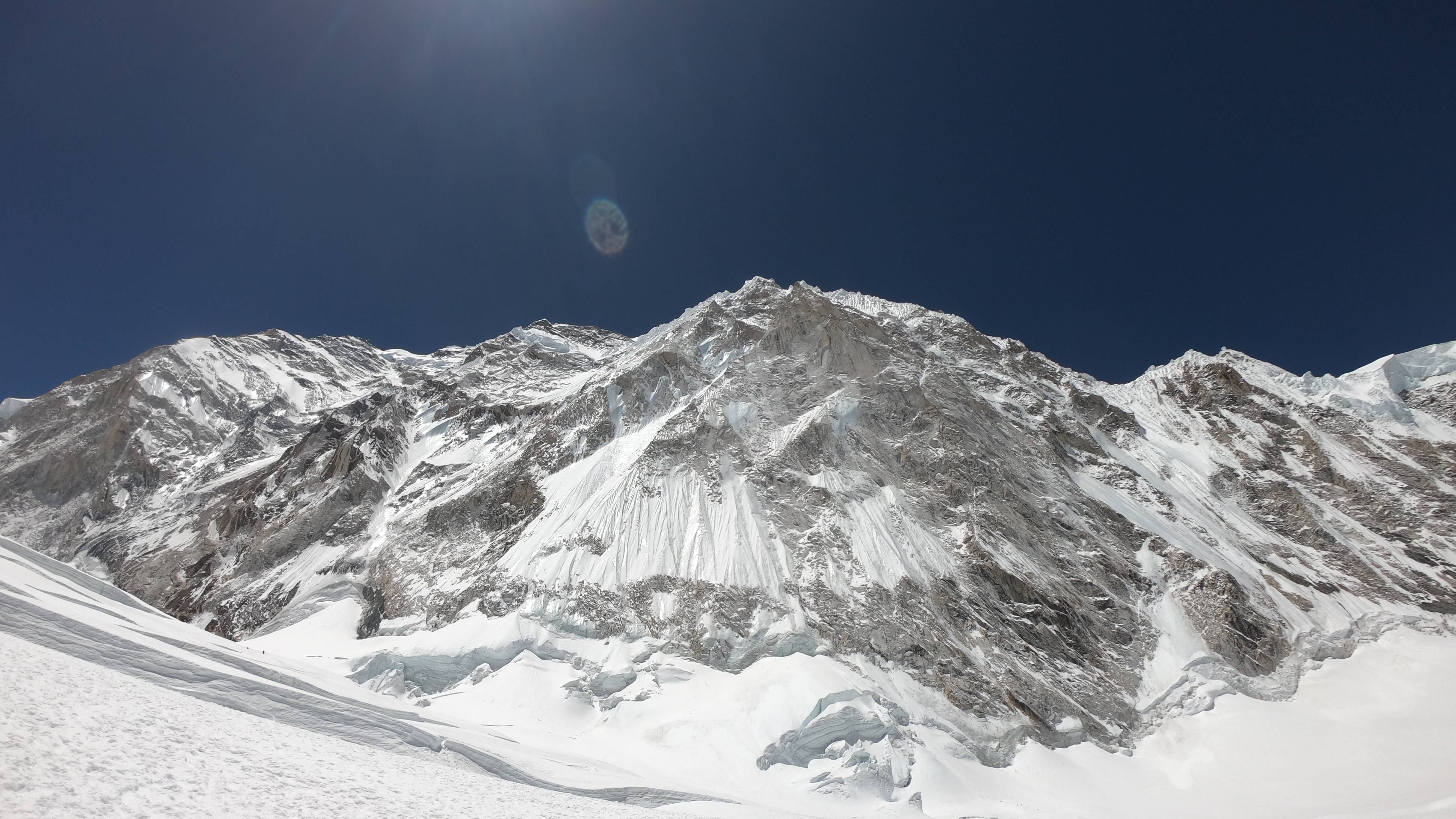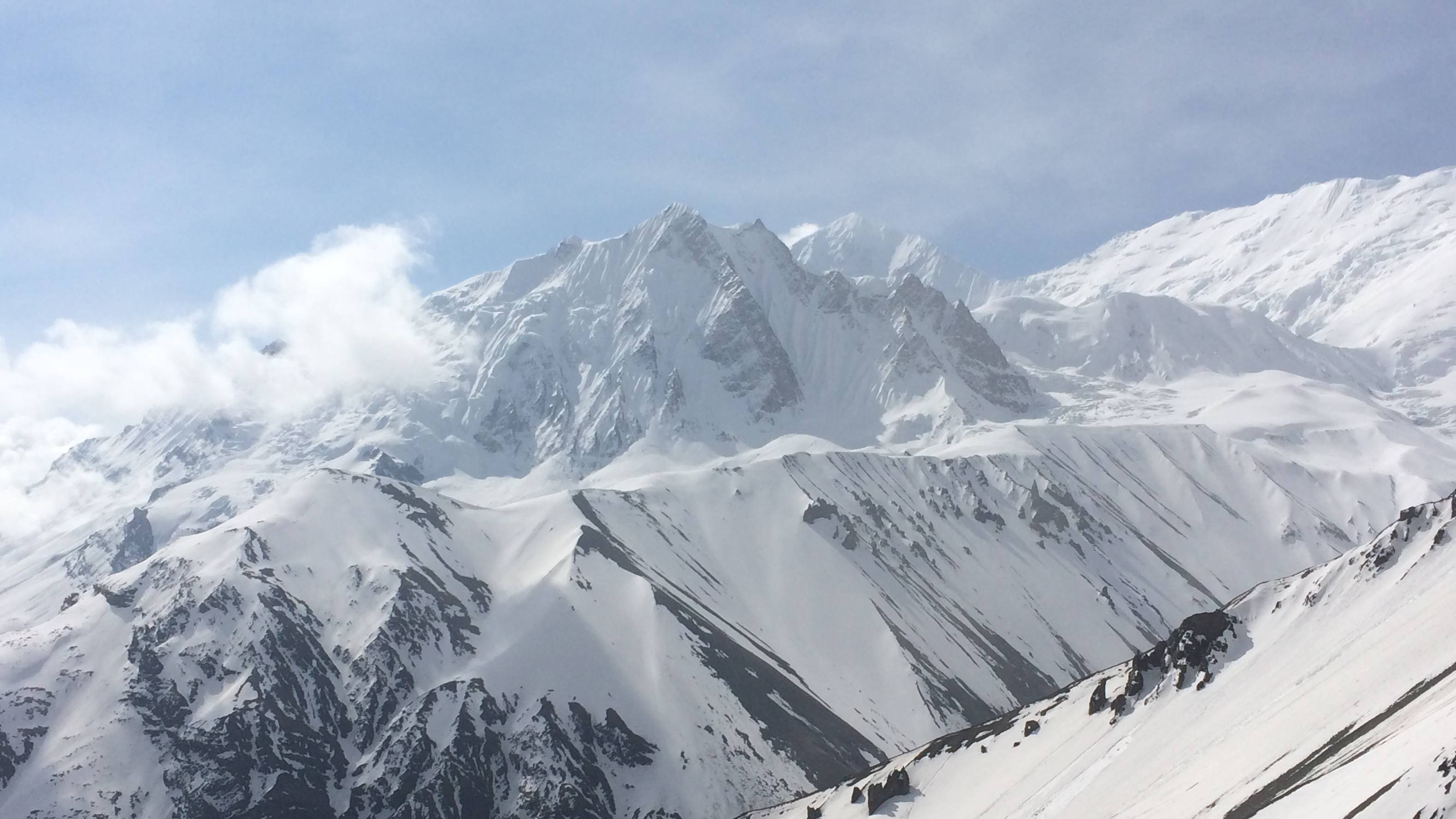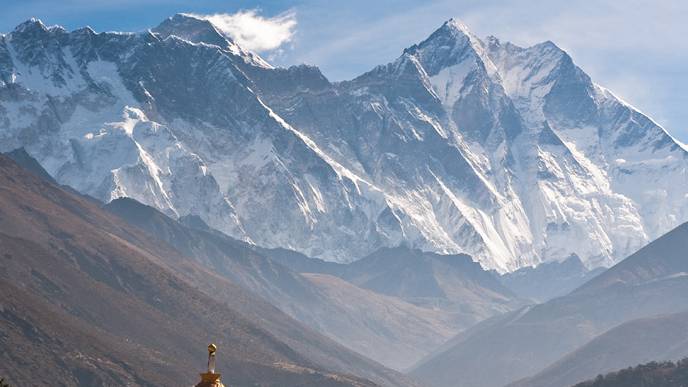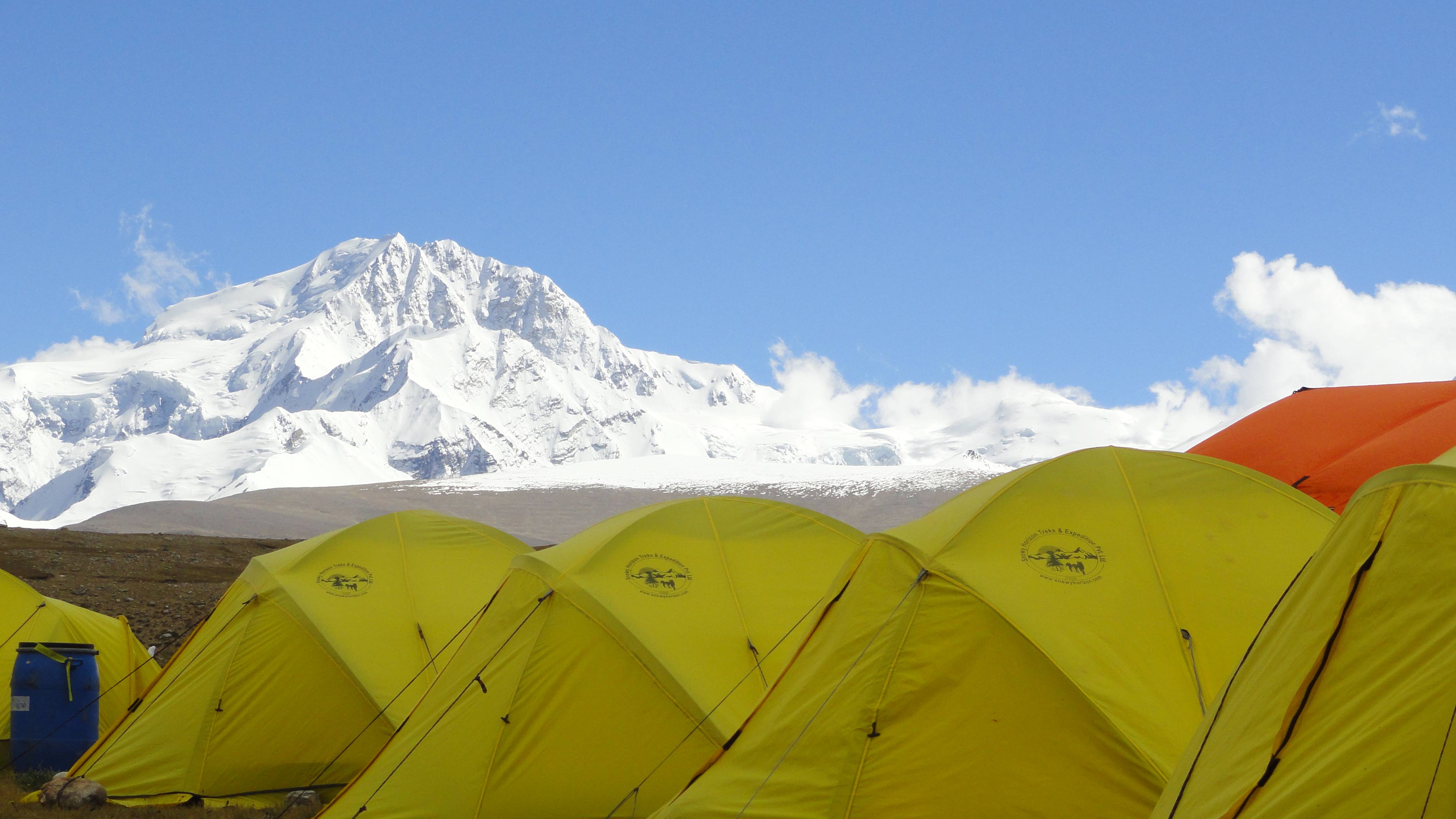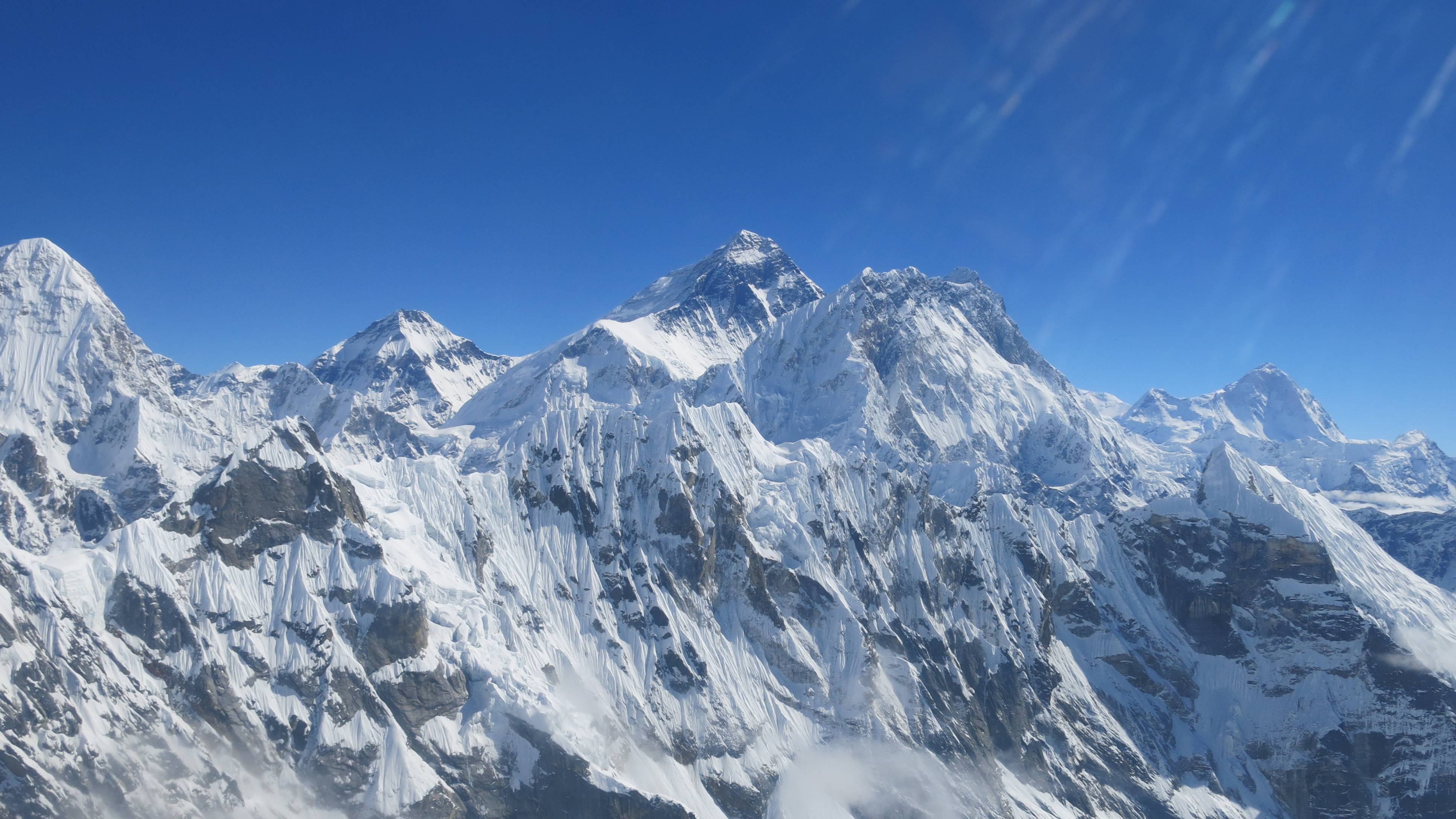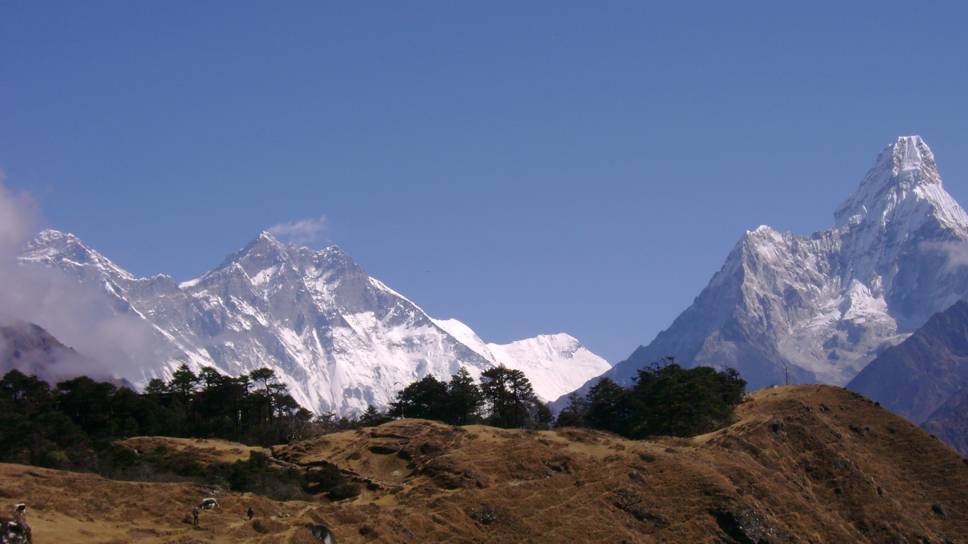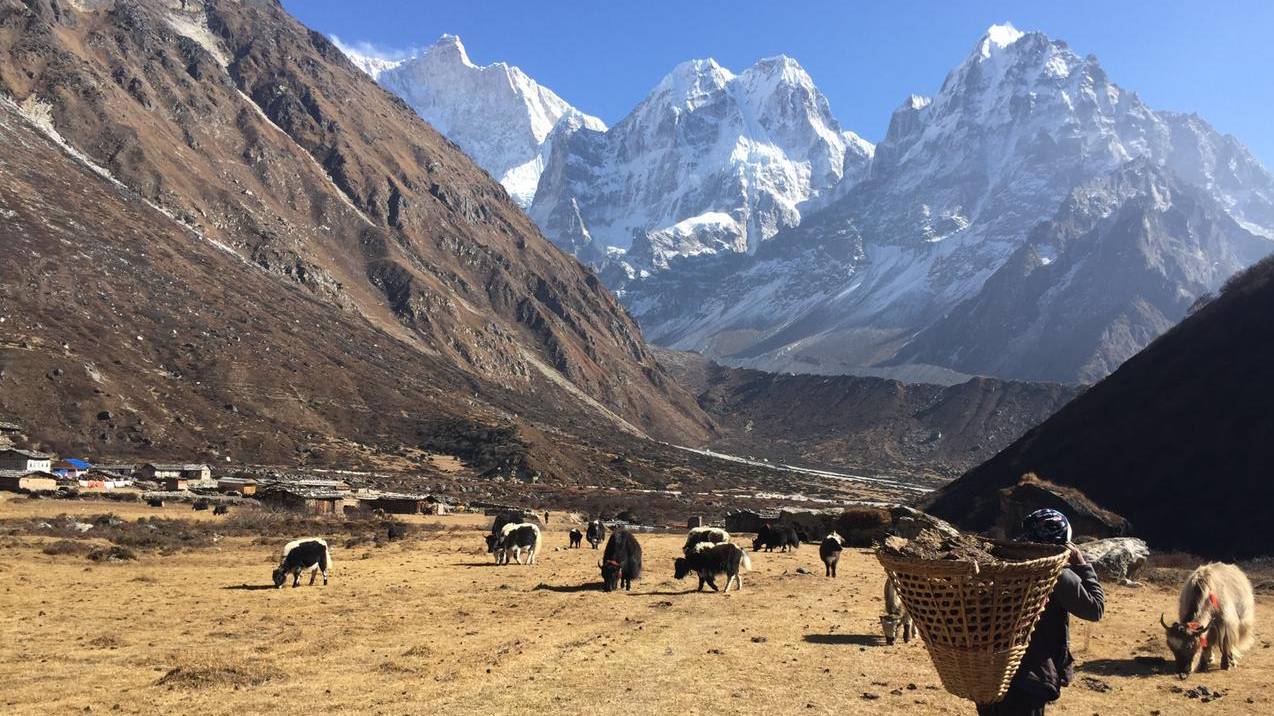Cho Oyu Expedition
Overview
“Team Snowy Horizon Expedition invites you to join and experience one of the easiest 8000m high peak climbing within the limited holiday, from Tibet side, with the devoted expert expedition teams.”
Cho-Oyu is the sixth highest mountain in the world with an elevation of 8201m. Mt. Cho Oyu Expedition is a classic Himalayan climb and considered the easiest 8000m-peak climb via its Northwest Ridge, with no technical climbing, big snowfields, and little objective danger. Mt. Cho Oyu is easily accessed by a 4-wheel-drive vehicle from Tingri, often guided, and is the first 8,000-meter peak for most climbers. Mt. Cho Oyu is located 30km west of Mt Everest and straddles the border between Nepal and Tibet. The peak can be climbed from both Nepalese sides up on the south face and northeast ridge routes and Tibetan side along the Northwest ridge route with the North approach being an easier and a standard route, which was also the route of the first summit. The mountain Cho Oyu is climbable during both the spring and autumn seasons.
For climbers that want additional support for Cho Oyu Expedition, Snowy Horizon Expeditions offers a personal Sherpa option to you. Since 2019 the Chinese authority applied the term that each climber needs to hire a personal Sherpa. Hence we will assign exclusively to you one of our very best Sherpa, who has reached the summit of Mt. Cho Oyu and Mt. Everest many times. Who has been trained through the Khumbu Sherpa climbing school, and who speaks English well. In Cho Oyu Expedition is a small, two-person team (you and your Sherpa), you will be able to take advantage of the "best of both worlds" with all the "horsepower" of the main Snowy Horizon team at your disposal in case of emergency. However, Snowy Horizon will also have the additional flexibility afforded by a climbing partner who is committed to climbing exclusively on your own schedule, when you want to. Your personal Sherpa will also be available to help carry your personal gear to the higher camps, and if desired, additional oxygen for Cho Oyu Expedition.
To complete the expedition of Mt. Cho Oyu, we set up the Advanced Base Camp and then three high camps on the mountain. Thereafter starts our main attempt to scale the summit (8201m). The expedition will be supported by very experienced staffs and climbing guides. We supply excellent mountaineering tents also for the high camps to our climbers of Mt. Cho Oyu. Our camp will be full of camping amenities in the 21st Era for your safety and comfort during climbing.
Approaches to Cho Oyu from North (Tibet):
- From the north, the peak approaches from the Tingri Plain, to the Palung Glacier that lies below the peak's north face, and the Gyabrag Glacier that surrounds the Northwest face.
- Typically, it takes 3 days to drive to Tingri (4300m) from Kathmandu with acclimatization stops in Kerung (2850m). From Tingri expedition takes a day's rest at Chinese Base Camp (5100m), and Middle Camp (5400m) before arriving at Cho Oyu North Advanced Base Camp (5700m). It takes 9 days to reach ABC from Kathmandu.
Climbing Routes:
Cho Oyu has three main ridges: the Northwest, the Northeast, and the Southwest and the impressive Southwest face rising 3000m from the ABC.
South Side:
- The south side of Cho Oyu is a great climbing playground for high-altitude climbers because the cool face is relatively easily accessible for skilled climbers.
- In 1994, Yasushi Yamanoi has completed the first solo ascent via the South West face. On October 2, 2006, Slovenian Pavle Kozjek speed-climbed a new route on the Southwest Face in a single solo ascent from advanced base camp.
- The crux was a vertical icefall, which was bypassed with 5.6 rock climbing. He reached the summit in 14 hours.
North Side:
- The Northwest Ridge is also known as Tichy Route. Tichy Route is a normal route for commercial operators and for first-time climbers of 8000m peaks. It doesn’t require technical climbing skills, as it is a less than 50deg snowfield with one very short section of yellow band rock with fixed lines. The route begins from the Gyabrag Glacier at the base of Peak 6395m and the location of the advanced base camp (ABC) at 5700m (18,700').
- The route skirts first and then ascends the screed and fern on the west side of the slope leading to Camp 1 at 6400m (21,000') at the bottom of the Northwest ridge proper of Cho Oyu. Camp 1 location is very nice as it is well sheltered from the weather by the ridge itself and the rocks below the base of the Northwest ridge.
- From Camp 1 the route follows the Northwest ridge and then opens out onto the Northwest face of the upper mountain. About halfway between Camp 1 and Camp 2, there is a steeper 30-50m section consisting of a moderate ice cliff. Most of the route between Camp 1 and 2 is fixed with a rope because there are hundreds of unskilled mountaineers with a huge entourage of climbing Sherpa provided by commercial operators.
- Camp 2 is located at about 7200m (23,500'). Some expeditions fix an intermediate temporary camp between C1 and C2, just below the ice cliff on the Northwest ridge at about 6600 m (21,600'), especially during the first or second acclimatization trip.
- Most operators fix a high camp at about 7450 m (24,500') just below yellow bands to maximize the chance of success on summit day but occasional parties do the summit from C2. Usually, the yellow bands are fixed with rope, which requires some strenuous climbing. Above this, in more rocky bands there is a steep summit ridge snowfield. Expeditions usually continue up this steep snowfield to the crest of the Northwest Ridge and the false summit. From here climbers cross a broad plateau, with a very small rise to the true summit of 8201m (26, 901 feet). From the true summit, there is an incredible view of Mt. Everest and Mt. Makalu.
Other Possibilities:
- Most of the climbing is on ice and snow slopes up to 50 degrees with a few very short sections of steeper rock and ice. The highest technical section is 6m high and safely be climbed with fixed ropes. This makes it perfect for ski and snowboard descent. The first American ski descent of an 8,000-meter peak was on October 1, 2002, when Montana ski mountaineer Kristopher Erickson reached the summit of Cho Oyu and then skied down.
- Speed climbing is another option on Cho Oyu. On October 2, 2006, Slovenian Pavle Kozjek speed-climbed a new route on the Southwest Face in a single solo ascent from advanced base camp. The crux was a vertical icefall, which was bypassed with 5.6 rock climbing. He reached the summit in 14 hours.
- Is Spring Climbing Better Then Autumn? On Cho Oyu, it does not matter. Each season is slightly different and has different attractions but for Cho Oyu being lower than Everest the reliability odds of good weather are roughly even.
- Spring starts cold and then warms up so acclimatization is tough but the climb can be pleasant with slightly longer days and warmer temperatures. In spring you wait for the transition between winter winds and monsoon snowfall. You don’t want to get big a snow dump on Cho Oyu because of the high objective avalanche danger on its 50deg slopes past C3. The visibility in spring is usually not as clear as in autumn. The optimum spring summit usually is in around mid-May.
- Autumn climbing is nice and comfortable. It is easy to acclimatize and you basically wait for the weather transition from monsoon to winter, when winds stop before they change direction. There is lots of snow and high objective avalanche danger, so you basically wait for snowfall to stop and snow to consolidate, and hope for no snow dump just before you are ready for your climb. The visibility is superb, crisp and crystal clear. The optimum autumn summit is around the end of September and early October before winter cold winds set in.
Day-to-Day Itinerary:
07 Sep: Day 01: Arrival in Kathmandu Airport & transfer to hotel (1350m).
08-11 Sep: Day 02-05: Rest, preparation, visa collection, assignment & briefing.
12 Sep: Day 06: Drive to Timure- Immigration formality and Drive to Kyarong, overnight hotel (BB Plan).
13 Sep: Day 07: Rest and Acclimatization in Kyarong (2850m), overnight hotel (BB Plan).
14 Sep: Day 08: Drive to Old Tingri (4390m); overnight hotel (BB Plan).
15 Sep: Day 09: Acclimatization at Old Tingri; overnight hotel (BB Plan).
16 Sep: Day 10: Drive from Tingri to Chinese Base Camp (4700m-3-4 Hrs.); Snowy camping.
17-18 Sep: Day 11-12: Rest and acclimatization at Chinese Base Camp.
Provision of Yaks and preparation for Advance Base Camp (ABC) trek.
19 Sep: Day 13: Trek from Chinese Base Camp to Middle Camp (5300m) along the 4x4 track, Snowy camp.
20 Sep: Day 14: Trek from Middle Camp to the ABC (5700m) of Cho-Oyu, Main camping.
21 Sep- 12 Oct: Day 15-36: Climbing Period – Summit Cho-Oyu (8201m).
13 Oct: Day 37: Dismantling ABC; prepare for departure.
14 Oct: Day 38: Drive via Tingri to Kyarong (8 Hrs.); overnight hotel (BB Plan).
15 Oct: Day 39: Drive from Kyarong to Kathmandu; overnight hotel (BB Plan).
16 Oct: Day 40: Rest and leisure day, and shopping in Kathmandu.
17 Oct: Day 41: Final departure to your port of destination.
Day-to-Day Itinerary:
08 April: Day 01: Arrival in Kathmandu Airport & transfer to hotel (1350m).
09-11 April: Day 02-04: Rest, preparation, visa collection, assignment & briefing.
12 April: Day 05: Drive to Timure; overnight hotel (BB Plan).
13 April: Day 06: Immigration formality and Drive to Kyorong; overnight hotel (BB Plan).
14 April: Day 07: Acclimatization at Kyorong; overnight hotel (BB Plan)
15 April: Day 08: Drive to Tingri; overnight hotel (BB Plan)
16 April: Day 09: Drive from Tingri to Chinese Base Camp (5200m) six hours; Camp.
17-18 April: Day 10-11: Rest and acclimatization at Chinese Base Camp; Provision of Yaks and preparation for Advance Base Camp (ABC) trek.
19 April: Day 12: Trek from Chinese Base Camp to Middle Camp (5300m) along the 4x4 track, camp.
20 April: Day 13: Trek from Middle Camp to the ABC (5700m) of Cho-Oyu, camp.
21 April-16 May: Day 14-40: Climbing Period – Summit Cho-Oyu (8201m).
17 May: Day 41: Dismantling ABC; drive to Chinese BC; drive to Tingri; Hotel.
18 May: Day 42: Drive to Kyorong; overnight hotel (BB Plan).
19 May: Day 43: Drive from Kyorong to Kathmandu; overnight hotel (BB Plan).
20 May: Day 44: Rest and leisure day and shopping in Kathmandu.
21 May: Day 45: Final departure to your port of destination.
Full Board Service Cost : Please contact us by email or call us
Cost Include
- All arrival and departure transfer services to and from the International Airport.
- 7 nights Hotel accommodations in Kathmandu on BB Plan as per category.
- Kathmandu-Kyarong-Kathmandu transfers with logistics, members, and staff.
- Tibet travel visa and permit for climbing members and involved staff.
- Mt. Cho-Oyu climbing permit with Chinese Government Royalty (US$ 9300 per person) for members.
- Mt. Cho-Oyu climbing permit with Chinese Government Royalty (US$4000 per person) for Sherpa.
- Mt. Cho-Oyu ABC permits sharing in the group (U$4000 per person) for the ABC Cook.
- Tibetan official Liaison officer for the Mt. Cho-Oyu Expedition fully paid.
- Kyarong-Tingri-Kyarong all accommodation (Maximum 6 Nights) on Full Meal Plan.
- Kyarong-Tingri -Chinese Base Camp and VV transportation by group sharing mini bus (SUV).
- All camping equipment in Chinese Base Camp and Advance Base Camp.
- Food during the expedition period for expedition members and staff, cooked by our cook in BC and ABC.
- 1:1 experienced climbing Sherpa guide and base camp staffs sharing with the team.
- Cargo and duties clearing assistance service in Kyarong border on both way.
- Gamow bag available for expedition group at ABC for emergency rescue.
- Solar panels for light and battery charge, available for expedition members at ABC.
- Each expedition member gets an individual tent in the ABC.
- Insurance, wages, meal allowances for private Sherpa, and sharing base camp staffs.
- Icefall, garbage, and environmental charges where applicable.
- Tent for C1, C2, and C3 sharing with private Sherpa and related members.
- High-altitude food for Sherpa and climbing members for C1, C2 and C3.
- Per person max. 50kg personal baggage allowance carried by Yak from Middle Camp to ABC and VV.
- First Aid medical kits for the Group and the staffs at ABC.
- Satellite phone for communication, available for members with the cost of US$ 5 per minute call.
- All necessary paper works, office service charges, and Government taxes, levied in Nepal.
- Complete pre-departure information and visa extension procedure assistance services (if necessary).
- Farewell Dinner in a typical Nepali restaurant with a domestic culture show in Kathmandu.
- Snowy Horizon Special Gifts (T-shirt/Pashmina etc.).
- Taxes and service charges of Snowy Horizon Treks & Expedition.
Cost Exclude
- Lunch and Dinner during your stay in Kathmandu (except farewell dinner).
- Items of personal nature, Laundry Expenses, Tips, etc.
- Expenses incurred towards usage of any communication means.
- Clothing, packing Items or bags, personal medical kit, personal trekking/climbing gear.
- Any extra services products, offers, or activities not mentioned in the itinerary.
- Any extra expenses arising from various/unforeseen situations like natural calamities, landslides, political disturbances, strikes, changes in Government regulations, etc.
- Any additional staff other than specified.
- Rescue, repatriation, medicines, medical tests, and hospitalization expenses.
- Oxygen bottles, masks, and regulators as per demand.
- Medical travel insurance and emergency rescue evacuation if required.
- Airfare of international and domestic flights.
- Nepal entry or re-entry visa fee (Visa issuance is easy at the arrival).
- Nepal custom duty fees for import of expedition goods if needed.
- Emergency/Rescue/Early Jeep cost (US$ 1200 approximately).
- Summit Bonus to the Personal Climbing Sherpa(Minimum US$ 1200 per Summit per Sherpa).
- Tips to Base Camp Staffs (Per member beginning from a Minimum of US$ 250.00 in Total at BC)
- Any other item not included in the “The cost includes” Section.
Notes
- Cost defers on Hotel Category for Hotels in Kathmandu.
- The itinerary is changeable and modifiable as per the needs and time frame of the clients.
- The cost will be re-calculated if the itinerary is changed or modified.
- Additional activities may be added as per request with nominal additional cost.
- For any kind of changes please contact us by email or call us.
- Grade: Mountaineering
- Elevation: 8,201m (26,906ft)
- Location: Nepal/Tibet border, 30km west of Everest
- Coordinates: 28°06′00″ N 86°39′00″ E
- First Ascent: Joseph Joechler, Herbert Tichy (Italy), Pasang Dawa Lama (Nepal), October 19, 1954
- Season: Late spring and autumn
- Duration: 41 days (typically)
- Group Size: 02-15 person per Group

